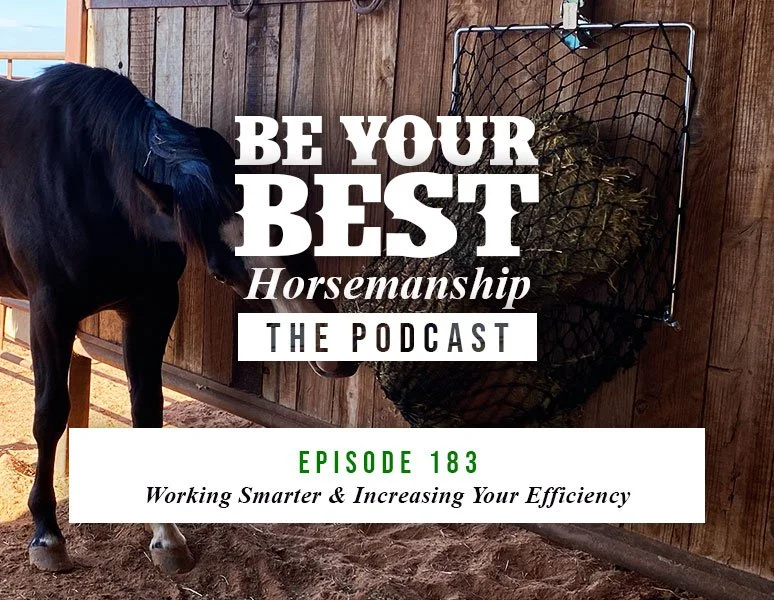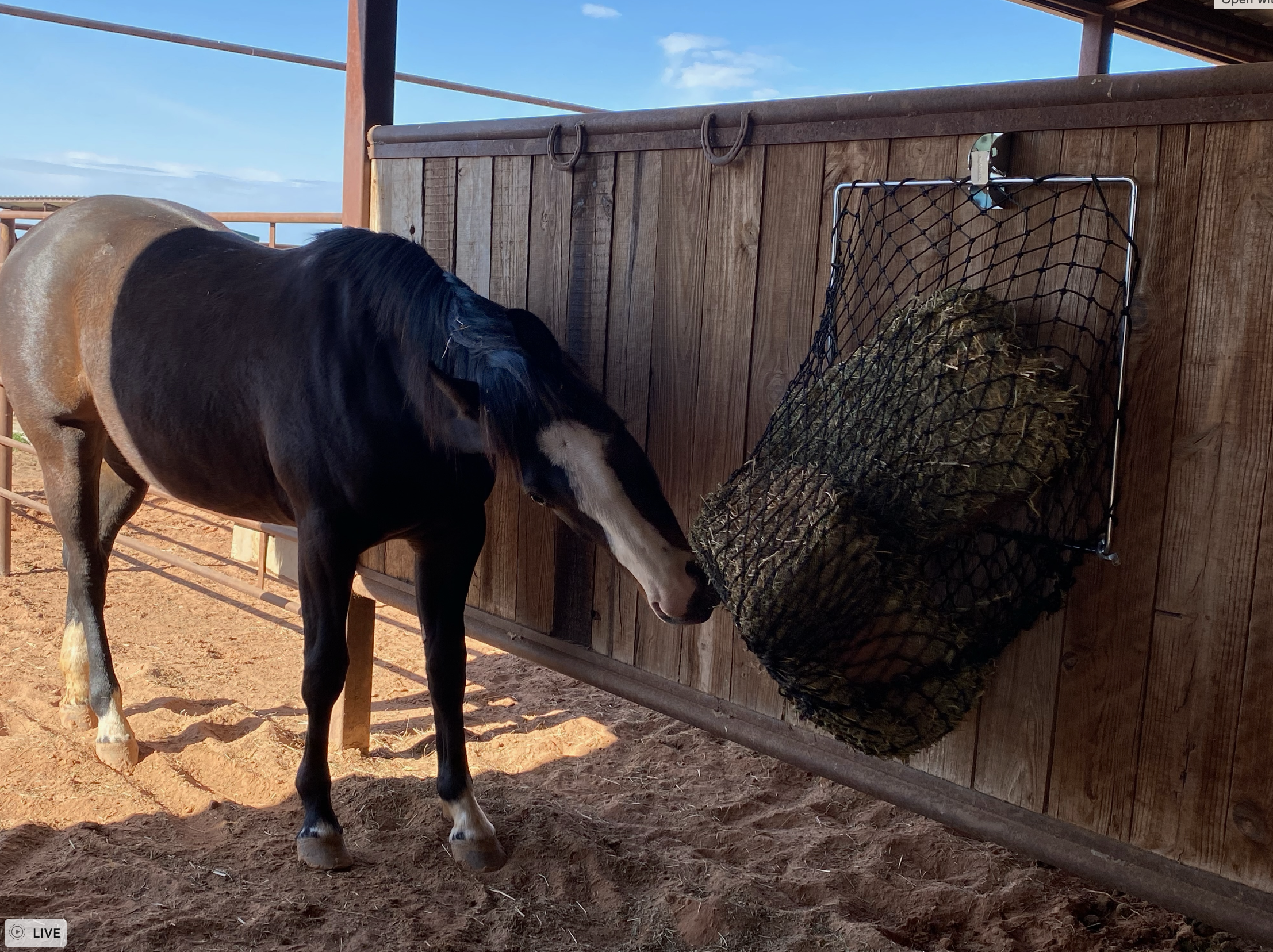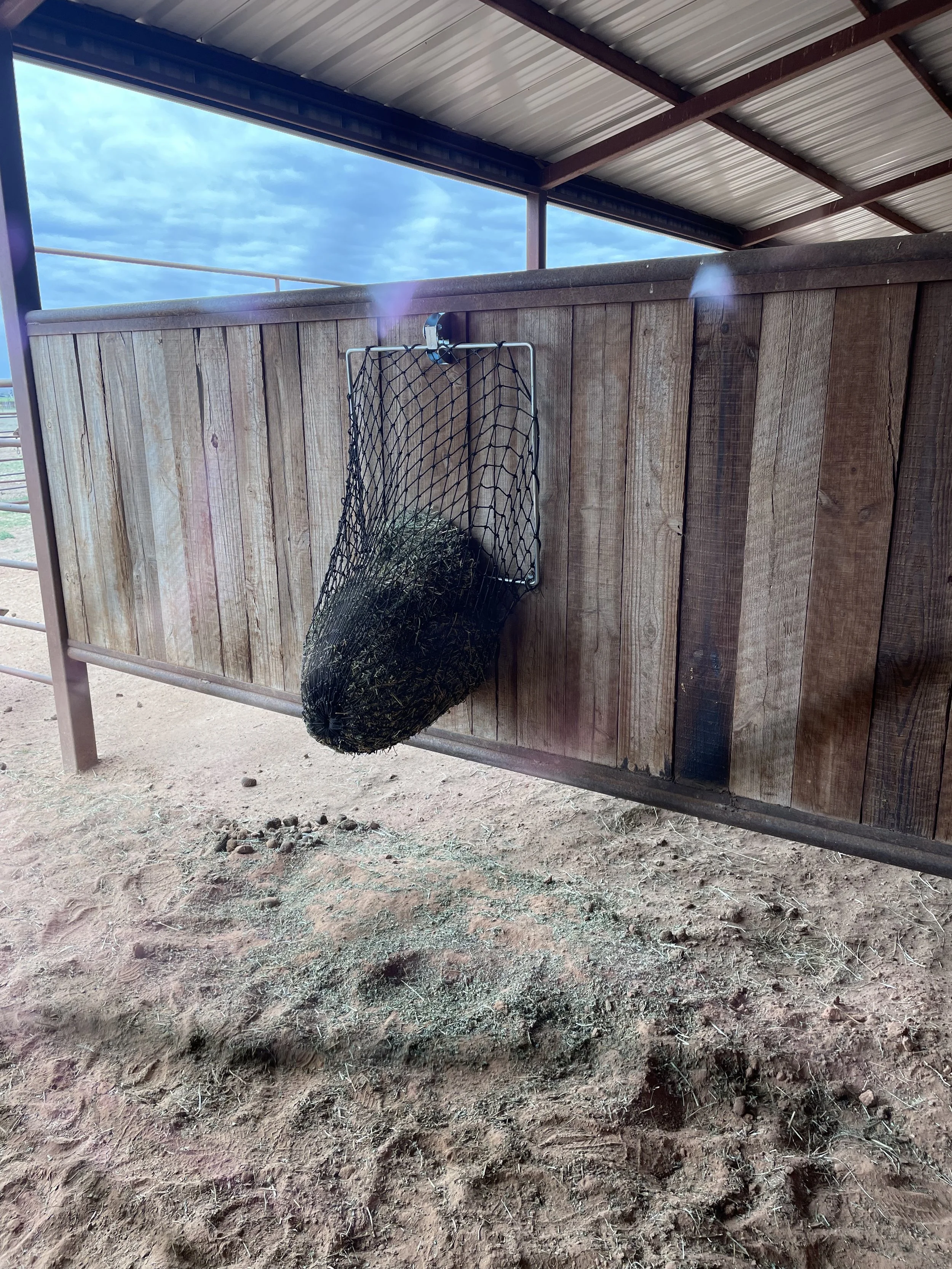Ep 183: Working Smarter & Increasing Your Efficiency
Whether you are training horses personally or professionally, we all have the same goal of optimizing the efficiency of our day-to-day operations. With a limited amount of hours in each day and operating expenses constantly on the rise, we're all looking for ways to work smarter.
Any time we progress to a different level, we are faced with new challenges that require us to consider new solutions. In my experience, this concept has proven true in both the progression of my horses’ training, as well as the progression of my business model. To me, “working smarter” means increasing the efficiency of my time and expenses.
Over the past 40+ years that I have been in the training business, I have had ample opportunities to optimize every aspect of my business. I am continually looking for a way to make my day to day 1% more efficient. This has resulted in a systematic approach to routine day-to-day tasks in my training program, such as feeding.
The Evolution of My Feeding Program
Feeding is a non-negotiable aspect of my business that accounts for a substantial portion of my time and expenses throughout the year. With the volume of horses that come in and out of my facility in a given year, it is essential for me to have a feeding process that is as cost and labor efficient as possible.
For years, training horses accounted for the bulk of my time and income. My business model relied heavily on my physical presence in the arena working horses. As my training business grew and my brand as a trainer evolved, I began to take on a few clinics, and I found myself being away from home more and more. In recent years, my distribution of time has shifted to the point where my clinic schedule has overtaken my training schedule. Now, I find myself on the road more days than I am at home during certain seasons of the year. While this has been a welcome change in my schedule, it has also posed the need for new solutions in my day-to-day feeding routines.
Minimizing Hay Waste
While I love the free choice aspect of feeding traditional hay, the biggest deterrent for me was the waste. In windy Weatherford, Oklahoma, I would estimate that my hay waste averaged 50-60%. Whether that was feeding horses on round bales in the pasture or putting flakes in stall feeders, I always found myself taking a double hit on the time and cost associated with that hay. First, I essentially doubled my investment in the hay because 50% of it went to waste. Second, I would have to account for the time spent cleaning up the wasted hay, whether that was my own time or paying someone else for their time.
So for the past 8-10 years, my solution was feeding alfalfa cubes. At the time, this was a great solution for my business because it allowed me to control the portions and quality of hay with little to no waste. The downside of the cubes is that it is a much more time and labor intensive way to feed hay.
As someone who has been very set in their ways on their feeding program for many years, realizing that my solution was no longer the efficient way to operate was a hard realization to come to. While the cubes served their purpose in the earlier phases of my career, I realized that feeding traditional hay was going to be a better long-term solution for me from both a cost and labor efficiency standpoint. So, I began seeking out solutions.
Optimizing My Hay Feeder Setup
Initially, the biggest factors in feeding traditional hay were 1) having a reliable hay source and 2) having an efficient way to feed it. First, I found two great hay sources who have an outstanding reputation for consistently producing quality hay, and thus far, have been great about having a reliable supply. Then, I started looking into some new solutions for hay feeders.
For years, I had used Hay Chix® Quarter Bale Nets and Half Bale Nets in my trailer, and I knew they had a reputation for having a solution to the hay waste. Because I had been so set in my ways on feeding my cubes for so many years, I guess you could say I was living under a rock when it comes to the breadth of the products that they have. Outside of hay bags, I had no idea the variety of hay feeders they had available. So, when I started searching for new hay feeders, we reached out to the team at HayChix® to learn more about the solutions they had and selected a few different setups for my training facility.
To put it simply, the Free Up Feeders have been a game changer for my feeding program. This was the first installation I had of the HayChix® feeders, and I put these in our covered pens with runs. As a trial run, I put a few of our colts in the pens with these Free Up Feeders to see how they would adapt to the new hay setup. I was pleasantly surprised with how well these colts took to the feeders. I initially put just a few flakes in each feeder, and by the time those horses were done, there couldn’t have been more than a handful of alfalfa leaves under the feeder. HayChix® has performed testing on their products and promotes that they are 94% efficient, but I would argue that it’s an even higher percentage than that. The hay waste in these pens was virtually nothing. And I thought, “Okay, now I’m onto something.”
Before feeding (1-2 flakes shown in the HayChix® Free Up Feeder)
After feeding - minimal waste under feeder!
In my outside pens, I set up a few Panel Feeders. These feeders are set up to where you can just slide a few flakes of hay right through the gap in the panels. I use the outdoor runs for clients who are coming through for a short period of time, either to pick up a horse in training or to attend a private clinic. With these panel feeders, it’s going to be easier for me to keep my facility looking nice, and it’s going to be a nicer presentation for my customers that are overnighting here.
In my lots and grass traps, I put free choice round bales out. I did a test with the larger nets in the first few traps. I’ve had round bales out in those traps for years, and they are just traditional, old school round bale feeders. This grass hay cost $130/bale last year, and I would say that previously, these horses were wasting at least 30-40% of it, conservatively. I put the large HayChix® nets on the bales in my mare pasture, and was blown away by the results. To my knowledge, these horses had never been on a net, and those mares ate on that hay bale all day. By the next morning, you couldn’t have gotten one little scoop of hay from the exterior of the net.
I’ve always loved the free choice aspect of feeding traditional hay, as long as I can control the waste. And now that I have a solution that controls the hay waste, it’s going to be more like a grazing situation where we can keep their nutritional program as natural as possible. Now, we are breeding mares, and I just think the more natural I can keep their feeding program, the more natural they are going to be.
Feeding Smarter (Like a Boss)
Just like anything in life, changing your routines can be a challenge. In order for me to continue making my operation as efficient as it can be, I had to be open to new solutions and new routines in my training business. Sometimes, “working smarter” means making small transitions that will have a larger impact down the road.
This transition in my feeding program will be an absolute game changer on the cost and labor efficiency of my feeding program. The addition of these new hay feeders alone will conservatively save me a few hundred dollars per ton on my feed cost. For the sake of easy math, let’s say my feed bill is $30,000-40,000 each year. If I can find a way to eliminate, at minimum, 30% of the waste, I’m looking at a $9,000-10,000 savings a year minimum.
This new setup is not only great from the cost savings perspective, but also the peace of mind of being able to leave and know that I have left my horses well-fed, taken care of, with minimal maintenance outside of daily check-ins. At this stage in my career, the peace of mind and ease of use is worth even more than the monetary savings.
I’d like to extend a special shout out to Alexi and the team at HayChix® for their help in finding me the right solutions for my training facility, and for helping us to “Feed Like a Boss!”
Want to try out the feeders mentioned in this episode?
Use code philhaugen20 for 20% off HayChix® hay bags and nets at haychix.com.
“Be Your Best Horsemanship” is brought to you by Silver Lining Herbs, Classic Equine, Martin Saddlery, Better Horses Network, Purina, Healthycoat, CINCH, Starbar, and Clarifly. These brands have been part of the Phil Haugen Horsemanship team for many years, and their products continue to play an integral role in the success of our performance horse training program. To support these brands, visit our Sponsors tab.







